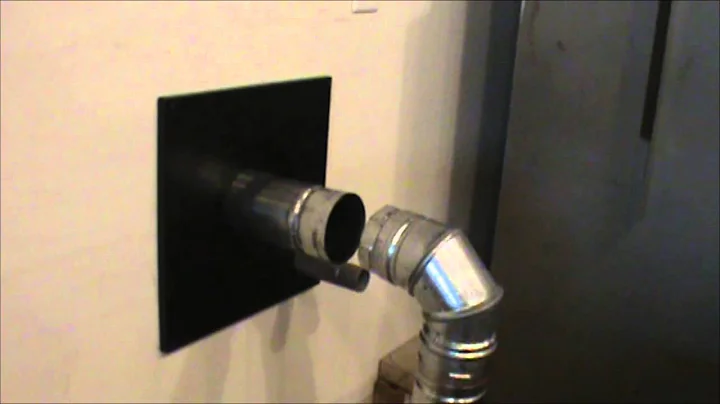Mastering the Italian 'R': Tips for Fluent Pronunciation
Table of Contents:
- Understanding the Fear of the Italian "R" Sound
- The Importance of Pronouncing Vowels Correctly in Italian
- The Different Pronunciations of the Italian "R"
- 3.1 The Mild "R" Between Vowels
- 3.2 The Emphasized "R" at the Beginning of a Word
- 3.3 The Double "R" Sound
- Techniques to Roll the Italian "R"
- 4.1 Moving the "R" Forward in the Mouth
- 4.2 The Similarity between "L" and "R" Sounds
- 4.3 Vibrating the Tongue for the "R" Sound
- 4.4 Associating Your "R" Sound with Frontal Vowels
- 4.5 Alternating Between "L" and "R" Sounds
- Overcoming the Fear of Rolling the Italian "R"
Understanding the Fear of the Italian "R" Sound
Have you ever been afraid of pronouncing a certain sound in a foreign language? For most English speakers learning Italian, that sound is the infamous Italian "R." Many believe that they must roll the "R" in order to speak Italian correctly, and if they can't roll it, they fear that their pronunciation will be terrible. However, as a teacher of Italian for over 20 years, let me assure you that rolling the "R" is not the be-all and end-all of speaking Italian fluently.
The Importance of Pronouncing Vowels Correctly in Italian
Before we delve deeper into the topic of the Italian "R," let's establish the importance of vowels in Italian pronunciation. It is the clarity and accuracy of your vowels that truly determine whether you are understood or not. While consonants play a role, they are secondary to the vowels. So, rather than obsessing over rolling the "R," focus on mastering the correct pronunciation of the vowels.
The Different Pronunciations of the Italian "R"
Now let's explore the three main variations of the Italian "R" sound. Understanding these variations will help you grasp the nuances of pronunciation and alleviate any fears associated with rolling the "R."
The Mild "R" Between Vowels
When the "R" appears in the middle of a word between two vowels, it is a mild "R." This means that it is not excessively rolled and can be pronounced more gently. For example, the word for "husband" in Italian, "marito," has a mild "R" sound. In such cases, you shouldn't worry too much about rolling the "R" excessively.
The Emphasized "R" at the Beginning of a Word
In contrast, when the "R" appears at the beginning of a word, it tends to be more emphasized. While rolling the "R" is not compulsory, if you have the ability to roll it, you may choose to do so for words like "roma." However, it is crucial to not go overboard and produce a Spanish-style roll, as that is not correct for Italian pronunciation.
The Double "R" Sound
Another instance where the "R" sound may be rolled is when it appears in its double form, as in the word "guerra" (war). If you have the ability to roll the "R," this is an opportunity to do so, but remember to avoid exaggerating it excessively. Moderation is key.
Techniques to Roll the Italian "R"
If you are determined to roll the Italian "R" and want to learn the technique, follow these steps to unleash your inner Italian pronunciation prowess.
Moving the "R" Forward in the Mouth
The reason many English speakers struggle to roll the "R" is because they produce it from the same place as the English "R"—at the back of the throat. In Italian, however, the "R" is produced from a frontal position in the mouth. To move your "R" forward, try positioning your tongue against the back of your top teeth instead of the back of your throat.
The Similarity between "L" and "R" Sounds
Interestingly, there is a great similarity between the Italian "L" and "R" sounds. Both are produced in the frontal region of the mouth. To help your tongue adapt to the new position for the "R," practice alternating between "L" and "R" sounds. For example, saying "ali" (wings) and "ari" (airs) will help you train your tongue to move from the bottom of your throat to the tip of your mouth.
Vibrating the Tongue for the "R" Sound
To produce the rolling effect for the "R" sound, we need to vibrate the tongue. It's not exactly the same as the "tr" sound in English—the vibration is more frontal. Imagine the sound of a machine gun in a war movie. It's a quick, rapid vibration that originates from the tip of the tongue against the back of the top teeth.
Associating Your "R" Sound with Frontal Vowels
Since the frontal vowels in Italian are e, o and a, try pronouncing the "R" sound with these vowels to find the combination that works best for you. Some students find success with the combination of "o" and "R," while others find "e" and "R" more effective. Experiment with different combinations until you feel confident in your pronunciation.
Alternating Between "L" and "R" Sounds
To further solidify your pronunciation skills, practice alternating between "L" and "R" sounds. Start with words that contain the "L" sound, like "ali," and then swap it for the "R" sound to say "ari." This exercise helps your tongue transition smoothly and efficiently between the two sounds.
Overcoming the Fear of Rolling the Italian "R"
Remember, rolling the "R" in Italian is not a prerequisite for speaking the language fluently. Many Italians themselves have different variations of the "R" sound due to regional accents or speech impediments. As long as you are understood and can communicate effectively, your "R" pronunciation is perfectly fine. Embrace your individuality and enjoy the process of learning Italian without fearing the "R" sound.
Highlights:
- Understand the fear associated with rolling the Italian "R" sound
- Emphasize the importance of vowel pronunciation in Italian
- Explore the variations of the Italian "R" sound
- Learn techniques to roll the "R" using frontal vowels and vibrating the tongue
- Practice alternating between "L" and "R" sounds to improve pronunciation
- Overcome the fear of rolling the Italian "R" and embrace individuality in language learning
FAQ:
Q: Is rolling the Italian "R" sound necessary for speaking fluent Italian?
A: No, it is not necessary. Pronouncing vowels correctly is far more important for being understood in Italian. Different variations of the "R" sound exist among Italians, so embrace your own pronunciation style.
Q: What are some techniques to roll the Italian "R" sound?
A: One technique is to move the "R" sound forward in the mouth, vibrating the tongue against the back of the top teeth. Associating the "R" sound with frontal vowels and alternating between "L" and "R" sounds can also help improve pronunciation.
Q: Can I still speak Italian well if I can't roll the "R" sound?
A: Absolutely! Many native Italians have different variations of the "R" sound, so as long as you are understood and can communicate effectively, your pronunciation is perfectly fine. Focus on mastering vowel pronunciation instead.







